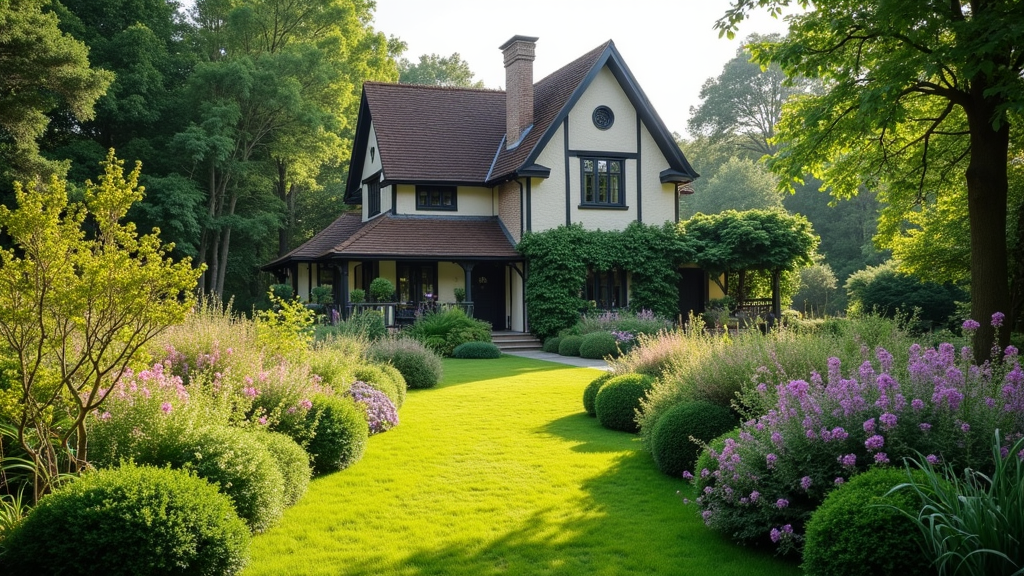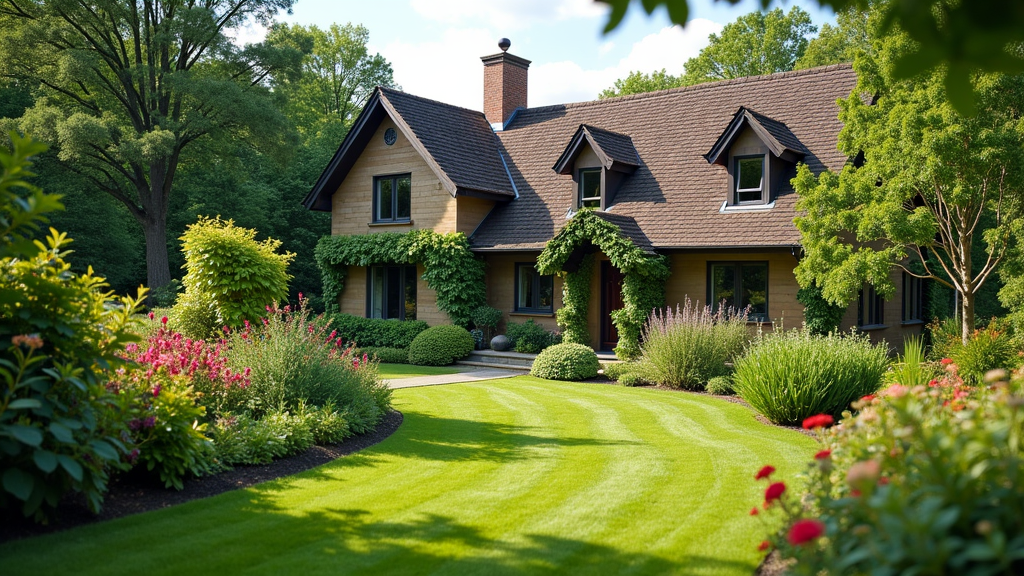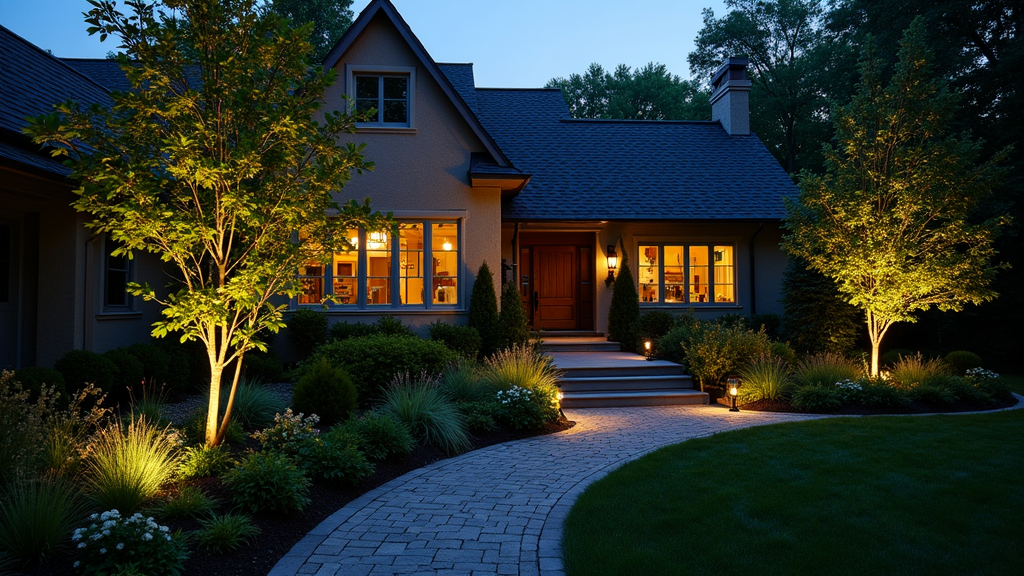Creating an inviting and vibrant landscape isn't just about having a green lawn; it's about striking the right balance between grass and floral displays. Flower beds can transform your outdoor space, adding color, texture, and visual interest. So, how do you get started? In this comprehensive article, we'll explore everything you need to know about integrating flower beds into your lawn design effectively.
Understanding Lawn Care Basics
What is Lawn Care?
Lawn care involves maintaining the health, aesthetic appeal, and functionality of your lawn. This includes mowing, watering, fertilizing, aerating, and weeding. A beautiful lawn provides the perfect backdrop for flower beds.
Why is Lawn Care Important?
Good lawn care not only enhances appearance but also promotes healthier plants. A well-maintained lawn contributes to environmental benefits such as carbon sequestration and improved air quality.
The Benefits of Flower Beds in Lawn Design
Adding Visual Appeal
Flower beds break up the monotony of green grass with bursts of color. They can draw attention to specific areas of your yard or provide a pleasing contrast against your lawn.

Enhancing Biodiversity
Incorporating flower beds creates habitats for beneficial insects like bees and butterflies. This biodiversity is essential for pollination and a healthy ecosystem.
How To Incorporate Flower Beds into Your Lawn Design
Integrating flower beds requires thoughtful planning. Here are some steps to consider:
1. Assess Your Space
Evaluate your lawn area—what's working well? Where's there room for improvement? Consider sunlight exposure, soil type, and existing vegetation.
2. Choose the Right Location for Your Flower Beds
- Sunny Spots: Most flowers thrive in full sun (6-8 hours daily). Shady Areas: Some flowers prefer partial shade; choose accordingly.
3. Plan the Shape of Your Flower Bed
Curved lines often look more natural than straight edges. Consider using shapes that complement existing landscape features.
4. Select Suitable Plants for Your Flower Beds
Choose flowers that thrive in your climate zone and soil type:
- Annuals for seasonal color. Perennials for long-term beauty.
Table: Popular Flower Varieties by Season
| Season | Annuals | Perennials | |----------|--------------------|----------------------| | Spring | Pansies | Peonies | | Summer | Marigolds | Daylilies | | Fall | Chrysanthemums | Sedums | | Winter | N/A | Hellebores |

Designing Your Flower Bed Layout
1. Create Layers with Height Variation
Tall plants at the back and shorter ones in front create depth. This technique ensures all plants are visible.
2. Use Color Theory to Your Advantage
Complementary colors can make your flower bed pop! Think about how different hues work together—warm colors like reds and oranges create excitement while cool colors like blues and purples bring calmness.
Soil Preparation for Healthy Flowers
Testing Soil Nutrients
Before planting, test your soil's pH and nutrient levels. You may need to amend it with compost or fertilizers.
Improving Drainage
If water tends to pool in certain areas, consider raised beds or amending the soil with sand or perlite to improve drainage.
Watering Techniques for Flower Beds
Understanding Watering Needs
Different plants have varying watering needs:
- Established perennials generally require less water. Newly planted flowers need consistent moisture until established.
Irrigation Systems vs Hand Watering
Consider installing a drip irrigation system if you have many flower beds or live in a dry climate.
Maintenance Tips for Beautiful Flower Beds
Maintaining flower beds is crucial for their longevity:
1. Regular Weeding
Weeds compete with flowers for nutrients and water—keep them at bay!
2. Deadheading Flowers
Removing spent blooms encourages further flowering and keeps plants looking tidy.
Seasonal Care Practices for Flower Beds
Every season brings unique tasks:
1. Spring: Planting Season
Spring is prime time for planting annuals after frost threats pass.
2. Summer: Mulching
Apply mulch around plants to retain moisture during heat waves.
Integrating Edging into Your Design
Edging defines flower bed boundaries while preventing grass from creeping in:
1. Material Options
Consider using stone, wood, or plastic edging depending on your style preference and budget.
Creating Harmony Between Grass and Flowers
Striking a balance between your lawn and flower beds creates visual appeal:
1. Mow Strategically
Maintain grass height so it complements rather than overshadows flowers—aim for around three inches tall!
Incorporating Seasonal Themes into Flower Beds
Designing with seasons in mind can enhance variety throughout the year:
Spring: Tulips & Daffodils
Summer: Sunflowers & Zinnias
Fall: Asters & Mums
Each season tells its own story through color!
Using Native Plants in Flower Beds
Native plants are adapted to local conditions—consider including them in your landscape!
Benefits Include:
- Lower maintenance requirements. Better support local wildlife populations.
DIY Tips For Building Raised Flower Beds
Raised flower beds offer better drainage while allowing gardeners easier access! Here’s how to create one:
Choose a location that gets ample sunlight. Build frames using rot-resistant wood or stones. Fill with quality topsoil mixed with compost before planting!Frequently Asked Questions (FAQs)
1) What types of flowers should I choose?
Choose based on climate zone; consult local gardening resources!
2) How often should I water my flower bed?
Water deeply once a week unless rain occurs—check soil moisture first!
3) Can I plant vegetables alongside flowers?
Absolutely! Many edible plants coexist beautifully with ornamental varieties.
4) How do I keep pests away?
Introduce beneficial insects like ladybugs or use organic pest repellents when needed!

5) When’s the best time to plant?
Typically spring after last frost; however fall planting works well too depending on species!
6) Do I need special tools?
Basic gardening tools http://shaneyigk254.trexgame.net/how-to-choose-the-right-landscaping-materials-for-your-project suffice—shovel, trowel & gloves will do nicely!
Conclusion: Embrace The Beauty Of Integration!
Flower beds offer endless opportunities to enhance your lawn design creatively! By considering factors such as plant selection, layout design & maintenance practices—you’ll cultivate an inviting outdoor space that radiates charm all year round! So roll up those sleeves & get ready to dig into this exciting venture today!
Incorporating these elements while keeping up with regular lawn care will ensure both grass & blooms flourish harmoniously together—not just surviving but thriving as one stunning landscape masterpiece!